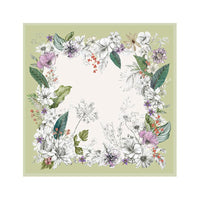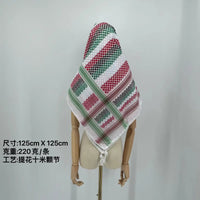Introduction: The Unique Place of the Scarf in Military Affairs
Scarves have played multiple roles throughout military history, serving as protective gear, a tactical tool, and even a symbol of military status. The scarf (shemagh or keffiyeh), due to its versatility, has evolved from traditional desert attire to standard issue for special forces worldwide. We will explore its history, military applications, and cultural significance, and invite you to share your experiences using it.
Historical Origins: The Origins of the Shemagh/Keffiyeh
The scarf, also known as the shemagh (in Saudi Arabia, the United Arab Emirates, and other places) or the keffiyeh (in Palestine, Jordan, and other places), originated in the deserts of the Middle East. Its original function was to protect against wind, sand, sun, and cold. Made primarily of cotton or wool, it is breathable and durable.
Early History
- Traditional Bedouin Clothing: Nomadic Bedouins have long used kerchiefs to protect their heads and faces from sunburn and sand (Source: The Bedouins of Arabia by Bruce Ingham, 1997).
- Ottoman Empire: The kerchief gradually became a symbol of Arab identity, with different colors and patterns representing different tribes or regions (Source: Arab Dress: A Short History by Yedida Stillman, 2003).
20th-Century Militarization
- British Army Adoption in Arabia: During World War I, British officer T.E. Lawrence ("Lawrence of Arabia") promoted the kerchief as a desert warfare accessory (Source: Seven Pillars of Wisdom by T.E. Lawrence, 1926).
- World War II and subsequent conflicts: The British SAS (Special Air Service) widely used the kerchief in African and Middle Eastern theaters, officially incorporating it into modern military equipment (Source: SAS: The First Secret Wars by Philip Warner, 2005).
Military Uses: From Desert Protection to Tactical Equipment
The scarf's applications in modern military operations extend far beyond its traditional protective function, becoming a versatile piece of tactical equipment.
Core Functions
1. Protection
- Sand and Sun Protection: In desert environments, the scarf can be wrapped around the head and neck to reduce UV damage.
- Cold and Warmth Protection: In cold climates, it can serve as a makeshift scarf or face mask.

2. Tactical Concealment
- Camouflage: Earth-colored or camouflage scarves help soldiers blend in and reduce glare.
- Dust and Insect Repellent: In jungles or deserts, it can filter out dust and mosquitoes from the air.

3. Emergency Uses
- Simple Bandage: It can be used as a tourniquet or bandage in battlefield first aid.
- Rope or Signaling Cloth: In emergencies, it can be torn into strips for tying or signaling.
Combat Examples
- Iraq and Afghanistan Wars: US and British Special Forces widely adopted the kerchief, with some units even customizing tactical versions (Source: The Operators: Inside the World’s Special Forces by Mike Ryan, 2008).
- Use by Private Military Companies (PMCs): Mercenary groups such as Blackwater also adopted it as standard equipment.
Modern Military Applications: Adoption and Improvement by Various Armies
Western Armies
- British SAS: Still retains the kerchief as standard desert equipment.
- US Special Forces: SEALs, Delta Force, and others use a tactical modification for desert missions.
- Australian SASR: Widely used in the Afghanistan War.
Middle Eastern and Asian Armies
- Israel Defense Forces (IDF): Adopted the kerchief as standard equipment and developed a lighter version.
- Indian Border Force: Used a similar design in the deserts of Rajasthan.
Cultural and Symbolic Meaning: An Identity Beyond Practical Function
The keffiyeh is not only a military weapon but also carries political and cultural significance.
- Palestinian Symbol: The black and white checkered keffiyeh has become a symbol of Palestinian nationalism (Source: The Palestinian Keffiyeh: From Symbol to Commodity* by Waleed Hazbun, 2010).
- Popular Culture Influence: Characters in films (such as Raiders of the Lost Ark, Tarzan, and Nasser's Once Upon a Time in Gaza) and games (such as Call of Duty) often wear keffiyehs, reinforcing their "tough guy" image.
Interactive Session: Reader Q&A and Experience Sharing
Q1: Have you ever used a tactical scarf? Share your experience!
Q2: What uses do you think the keffiyeh has for civilian outdoor activities?
Q3: Should military scarves retain their traditional design or continue to evolve with advanced technology?
Feel free to discuss in the comments section!
Conclusion:
The Future of the Scarf and the Continuation of Military Culture. From Bedouin nomads to modern special forces, the evolution of the kerchief embodies the marriage of practical military equipment and cultural symbolism. While advances in material technology may allow for further refinement, its core values—adaptability and versatility—will continue to influence the military and outdoor sectors.











